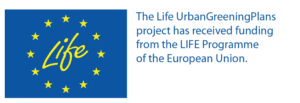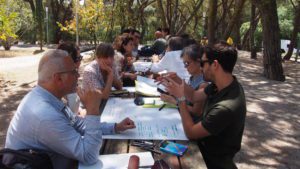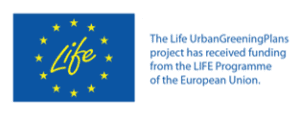Creating Urban Greening Plans – Lisbon Meeting Report
Working sessions in Monsanto Forest Park
 From the 7th to the 9th of June 2022, LIFE UrbanGreeningPlans (UGP) project partners and experts came together in Lisbon for a Periurban Park Symposium. Here, you can find the outcomes report, detailing experiences from Portugal’s Periurban Parks, as well as reflexions on what is needed to create successful Urban Greening Plans.
From the 7th to the 9th of June 2022, LIFE UrbanGreeningPlans (UGP) project partners and experts came together in Lisbon for a Periurban Park Symposium. Here, you can find the outcomes report, detailing experiences from Portugal’s Periurban Parks, as well as reflexions on what is needed to create successful Urban Greening Plans.
Periurban Park Symposium – learnings from Portugal
The meeting consisted of two plenary sessions, seven working sessions and three field trips. It was a closed meeting, with apart from the project partners, only invited experts attending the Periurban Park Symposium. Presentations were held by, among others, Ana Cristina Lourenço, Câmara Municipal Lisboa, João Cardoso de Melo, Parque natural Sintra-Cascais and Ines Rosario, Faculty of Sciences of the University of Lisbon.
We must work with nature
Said Ana Cristina Lourenço of Lisbon. The city, which won the European Green Capital Award 2020, is using Green Infrastructure (GI) as its main tool to face climate change. Not just for the ecosystem services GI delivers, but also for the health of people, social amenities and air quality. Additionally, Lisbon has a huge Periurban Park: the Monsanto Forest Park that supports the city in its greening efforts. In fact, the Park used to be a completely degraded, empty area. Over the last 70 years it was restored and became a sanctuary for biodiversity, and city dwellers. As such, it was the perfect place for project partners to come together to further develop concrete actions to support UGPs.
During the symposium, different large scale nature restoration and connectivity projects were introduced. They all shared the same goal: connecting urban areas to natural landscapes and improving GI. Gonçalo Andrade presented a big project in the north of Portugal: “Parques do Porto”. It will create a GI network of Periurban Parks for the Porto Metropolitan Area, starting by identifying the Parks that already exist and potential new areas and ecological connections. This is a great example of common compromise and common action undertaken by several municipalities, whilst adapting agile project management.
Additionally, different methods to monitor biodiversity were presented. From citizen science, to the newest technological developments, there are many tools to help nature managers analyse their work. After all, only through effective monitoring can the impacts of actions be successfully analysed.
Working sessions

Working sessions in Monsanto Forest Park
The valuable inputs from invited speakers in the morning, provided the UGP project partners with inspiration for the working sessions in the afternoon. Following the “World Café” technique, participants
worked in groups on answering a number of questions related to Green Infrastructure, Biodiversity Monitoring, Nature-based Solutions (NBS) and Urban Greening Plans. Among others, they discussed:
- How UGPs can be adaptable to external drives like climate change;
- The best way to measure biodiversity enhancement in urban areas;
- How to use positive communication to raise awareness on the climate emergency & the importance of NBS;
- How UGP and NBS can help meet the EU restoration targets.
Urban Greening Plans need to become URGENT Greening Plans if we want to adequately respond to Biodiversity loss and climate change.
Field trips
The programme also included diverse field trips to Quinta do Pisão Natural Park, Arrabida Natural Park, and of course the Monsanto Forest Park. All three of these area face “typical” challenges for Periurban Parks like:
- Overcrowding;
- Vandalism;
- Wide range of users.
The visits gave a valuable opportunity for exchange and provided participants with best practice examples of how these challenges are faced by the different managing bodies.

